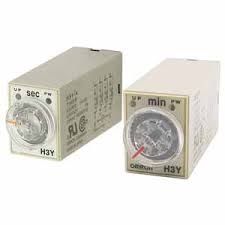
Introduction to Omron Automation and Safety Relay
Omron Automation and Safety Relay solutions are designed to protect equipment, workers, and processes in modern industries. These relays provide secure switching, fault detection, and fail-safe mechanisms, ensuring systems operate with efficiency and compliance. By integrating them into electronics and control networks, industries reduce risks while maintaining seamless operations across cables, sensors, connectors, and controllers.
What Is an Omron Automation and Safety Relay?
An Omron Automation and Safety Relay acts as a monitoring device that ensures machines respond correctly during fault conditions. It shuts down or isolates power when issues such as overloads, overheating, or irregular signals are detected.
These relays:
- Monitor input from sensors, switches, and controllers.
- Trigger safety functions during abnormal operations.
- Offer compatibility with electronics like microcontrollers, contactors, and capacitors.
Key Benefits of Omron Safety Relays
Enhanced Worker Safety
Omron relays protect employees by immediately cutting power to hazardous machines during unsafe conditions. This reduces accidents and ensures compliance with global safety standards.
Equipment Protection
They guard motors, controllers, and microprocessors from electrical faults. Components like fuses, thermal pads, and capacitors work alongside relays to minimise downtime.
Flexibility and Integration
Omron relays integrate seamlessly with cables, connectors, and switches. Whether controlling LEDs, laptops, or contactors, they adapt to diverse applications.
Reliability in Harsh Environments
Industrial tools often face extreme heat, oils, and mechanical stress. Omron relays withstand these conditions, offering dependable operation with grips, thermal solutions, and protective housings.
Applications Across Industries
Manufacturing and Robotics
In automated production lines, Omron Automation and Safety Relay units safeguard sensors, microcontrollers, and robotics controllers. They help ensure safe stops, reducing risks without affecting productivity.
Energy and Power Distribution
Safety relays control circuits, contactors, and fuses in power systems. Their monitoring ensures stable energy flow while avoiding faults caused by thermal overloads.
Electronics and Consumer Goods
From laptops to microprocessors, relays ensure electronic devices comply with safety standards. They regulate current through connectors, switches, and capacitors, extending product lifespan.
Automotive and Transport
Vehicles use safety relays for advanced electronics and automation. Their integration with LEDs, sensors, and controllers enhances both driver safety and system reliability.
Types of Omron Automation and Safety Relays
Monitoring Relays
Track inputs from sensors, cables, and switches to ensure smooth operation.
Emergency Stop Relays
Used in machinery where immediate shutdown is vital.
Guard Monitoring Relays
Work with connectors, fuses, and contactors to verify safety gates and doors are secure.
Multi-Function Relays
Provide versatility for microcontrollers, capacitors, and multiple safety functions in one unit.
Why Omron Leads in Automation and Safety
Omron’s reputation in electronics and automation stems from:
- Innovation in design: Precision engineering for microcontrollers and industrial electronics.
- Durability: Resilience against thermal stress, oils, and harsh conditions.
- Compliance: Meeting global safety and industrial standards.
- Integration: Compatibility with controllers, contactors, and advanced automation systems.

Practical Considerations Before Installation
When implementing Omron Automation and Safety Relay systems, industries should:
- Match relays with appropriate sensors, connectors, and cables.
- Consider the thermal limits and add protective pads or fuses if necessary.
- Ensure controllers and microprocessors are programmed for proper safety logic.
- Use tools and grips designed for safe relay handling.
Future of Safety Relays in Industrial Automation
As industries adopt smarter technologies, Omron relays are evolving with:
- IoT integration: Relays communicating data directly to controllers and laptops.
- Energy efficiency: Lower thermal losses through advanced capacitor and microprocessor designs.
- Enhanced safety protocols: Improved monitoring of switches, LEDs, and automation tools.
Conclusion
Omron Automation and Safety Relay systems represent the backbone of modern industrial safety. They safeguard equipment, workers, and electronics while ensuring compliance with global standards. From factories and robotics to consumer electronics and automotive systems, these relays integrate with cables, connectors, sensors, and controllers to provide reliability, protection, and efficiency.
As industries push toward digital transformation, Omron relays will continue to play a crucial role in balancing safety, performance, and innovation.


